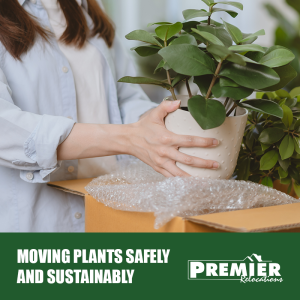 Embarking on a move is an exciting journey, but for plant lovers, it also presents the challenge of safely transporting their leafy companions to a new home. Whether you’re a seasoned plant parent or just starting your botanical journey, relocating plants requires careful planning and consideration to ensure they arrive at their destination healthy and thriving.
Embarking on a move is an exciting journey, but for plant lovers, it also presents the challenge of safely transporting their leafy companions to a new home. Whether you’re a seasoned plant parent or just starting your botanical journey, relocating plants requires careful planning and consideration to ensure they arrive at their destination healthy and thriving.
Choosing the Right Plants:
Before you begin packing, take inventory of your plants and assess which ones are suitable for relocation. Consider factors such as the plant’s size, health, and resilience to stress. While some plants may thrive during a move, others may require extra care and attention to survive the transition.
Preparing Your Plants:
Several weeks before your move, start preparing your plants for relocation. Trim any dead or damaged foliage, repot plants if necessary, and remove pests or diseases. Water your plants thoroughly a few days before the move to ensure they are well-hydrated but not waterlogged on moving day.
“3 Weeks Before Moving Day
Repot any plants in clay pots into unbreakable, plastic containers. The new pot should be big enough to hold the plant, without being too big.
2 Weeks Before Moving Day
Prune larger plants. Pruning will make packing easier and produce healthy, bushy, compact, attractive houseplants. You can prune by simply pinching back newer growth with your thumb and forefinger. Succulents (e.g., cacti, jade plants) and ferns do not respond well to pruning.
1 Week Before Moving
Eliminate any insects or plant parasites. Pesticides may contain harmful chemicals so use them with care and always follow label directions. Another way to kill pests is to put the entire plant in a black, plastic utility bag for about six hours with a bug/pest strip or an animal flea collar. Keep the bag in a cool, shady area. This method is environmentally safer for your home and your plant.
2 Days Before Moving
Make sure your plants are getting their normal dose of water. Keep in mind that during the winter months, roots saturated with moisture may freeze. In warmer weather, overwatered plants are subject to damaging fungus growth during transit.
Moving Day
1. Pack your plants in the morning, or the night before. Conventional packing cartons are good for moving plants.
2. Securely anchor each plant to prevent slipping when the box is lifted or jostled during transit. To do this, place the pot in a box, making sure it fits snugly in the bottom. Use paper around the base of the pot to hold it in place.
3. Next, cushion branches and leaves of the plant with soft paper. Moistened paper can be used for short periods; however, plants allowed to remain wet are more susceptible to disease.
4. Finally, punch air holes in the sides of the box and loosely fasten the lid.
5. Set the boxes upright and clearly mark the lids to avoid putting them into the van with your other belongings. Now, your plants will be ready to travel safely for up to four days.” – UniGroup
Transporting Your Plants:
During transit, it’s essential to minimize temperature fluctuations and protect your plants from direct sunlight and drafts. If you’re moving locally, transport your plants in your car with the windows cracked open to allow for airflow, we will handle transporting your pots with great care. For long-distance moves, consider shipping your plants via a reputable plant shipping service or hiring professional movers, like Premier Relocations, with experience in transporting plants.
Settling into Your New Home:
Once you arrive at your new home, acclimate your plants to their new environment gradually. Place them in their designated spots, ensuring they receive adequate light, humidity, and airflow. Water your plants as needed and monitor them closely for signs of stress or adjustment.
Embracing Sustainability:
As you relocate your plants, consider adopting eco-friendly practices to minimize your environmental footprint. Use biodegradable packing materials whenever possible, such as recycled cardboard boxes or plant-based packing peanuts. Reuse or recycle packing materials after the move, and consider donating unwanted pots or planters to local community gardens or plant swaps.
Relocating plants can be a rewarding and fulfilling experience with proper planning and care. By following these tips and embracing sustainable practices, you can ensure that your leafy companions arrive at their new home happy, healthy, and ready to thrive. Happy moving, and may your plants continue to bring joy and beauty to your new space!
